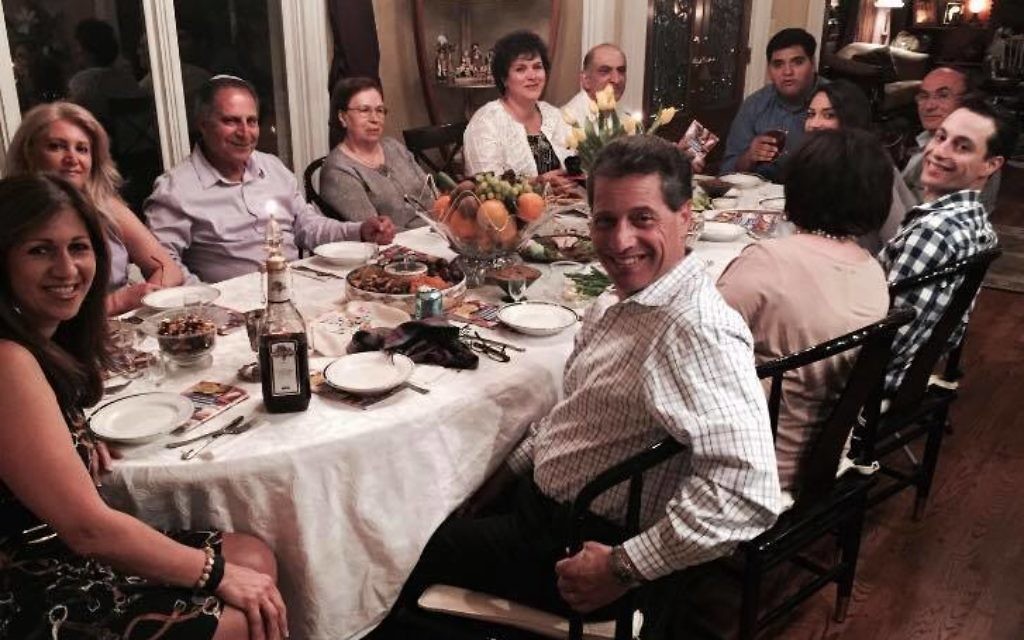Persian Jewish Traditions Influence Seder
Safa Nooromid recounts how her family observed Passover before she immigrated from Iranian Kurdistan.

As Iran’s political climate began to turn in the late 1970s, Safa Nooromid’s family sensed the need to escape. Her father suggested they travel to Israel for a short while until things settled down.
They didn’t know they were leaving everything behind and locking the doors to their home for the last time.
For more than 38 years Nooromid has lived in Georgia, but before she immigrated to the United States, she lived a life full of culture and traditions in a small city in Iranian Kurdistan. She shared her story as part of a Rosh Chodesh Nisan learning session Friday, March 16, at the Weber School.
Get The AJT Newsletter by email and never miss our top stories Free Sign Up
Nooromid’s family lived in Sanandij in Kurdistan. The city was predominantly populated by Sunni Muslims, who Nooromid said got along relatively well with the Jews. Everyone knew who they were.
She said incidents of anti-Semitism took place but were rare. For example, when the family would ignore the produce kiosk, the owner would sometimes throw a tomato at them and call out “Jews.”
Nooromid’s family in Iran followed special customs and traditions to celebrate Jewish holidays. Because she was brought up in a kosher home, for example, Nooromid’s family never ate any processed foods and made everything from scratch. The background perhaps is what led her to become a nutritionist and select Sukkot and Passover as two of her favorite Jewish holidays, Nooromid said.
For Sukkot, the family always built a massive sukkah alongside their pool and decorated it with Persian rugs, furniture and drapes. Nooromid recalled that her father would sleep in the sukkah for seven nights and invite family to visit, making it a memorable holiday for her.
When it was time for Pesach, Nooromid said, the family did not buy boxes of matzah from grocery stores but had to prepare everything by hand starting two months in advance.
Two weeks before the holiday, the family moved from the east wing to the west wing of their massive house and hired help to wash the rugs and paint the house. The family used a brick oven to bake matzah.
Nooromid said her family sacrificed a lamb for the zeroah, symbolizing the paschal lamb, for the seder. Her father would spread its blood on the doorposts and use the meat to make kabobs and distribute it among families in need.
Sanandij had about 200 Jewish families and three synagogues. The synagogues were not separated into distinct denominations, such as Reform, Conservative and Orthodox, but women and men did pray separately, with little participation from the women.
Nooromid was applying to college when protests and talk of overthrowing the shah spread through Kurdistan. To avoid conflict in their small city, the family moved to Tehran, where they believed they would be safer, but the situation worsened.
Nooromid’s family arranged to leave the country, but when they arrived at the airport, they saw hordes of others trying to leave. Over the next five days the family visited the airport every day and spent seven to eight hours waiting until they booked the last flight from Iran to Israel before the airport closed.
Nooromid met her husband, Sharokh, in Israel; he also left Iran before the revolution. They moved to America after a year and settled in Georgia, where Sharokh studied civil engineering at Georgia Tech.
After he completed his degree, Sharokh sought to return to Iran, but his parents advised him against it because of the country’s political turmoil.
“People often think that Iran is not a modernized country or that it was backwards, but in fact we were ahead of most countries in fashion, education and technology,” Nooromid said. She said Iran’s fashion was highly influenced by Europe, and whenever relatives would visit, they would bring clothes from America, only to realize Iranians were ahead of the trend.
She added, “I think people are always interested to hear my story and learn about Iran, which I am happy to share with them.”




comments